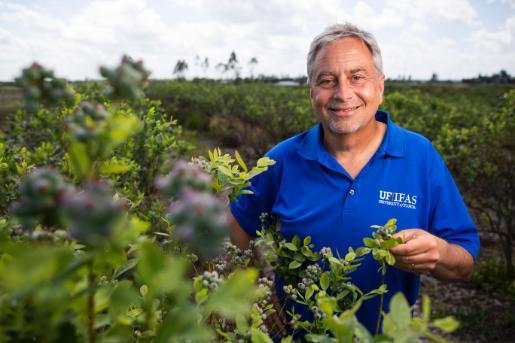By Clint Thompson
Florida’s blueberry industry sustained minimal damage from Hurricane Helene. But the storm’s devastating path of destruction reminds growers about the dangers a hurricane can pose this time of year.

Doug Phillips, University of Florida Institute of Food and Agricultural Sciences (UF/IFAS) blueberry Extension coordinator, discusses the impacts a hurricane can have on blueberry bushes in early fall. There can be primary and secondary impacts.
“The two types of damage that you typically get from a hurricane is wind damage, which is going to be plants blown over; and of course with plants blown over you’re going to have root damage. It can lead to root disease. Folks try to stake them up, and that can be successful to a degree, but sometimes with that root damage, if the plants are blown over you may not see the ultimate impacts of it for as long as a year if we’re talking about stem blight coming in,” Phillips said. “The other wind impact can be defoliation. Defoliation this time of year can be important because it’s when floral buds start to develop. If there’s defoliation when floral buds start to develop, you could end up with less floral buds and lower yields.
“The other impact is flooding. If you’ve got flooding, you’ve got standing water. You’ve got hypoxia, a low to no-oxygen zone in the roots. It can cause root damage and also you’ve got a greater degree of standing water for phytophthora root rot. Those are the big dangers for flooding.”
Hurricane Helene moved through Florida and Georgia on Sept. 26 and 27, mostly impacting the blueberry crop in Southeast Georgia.










